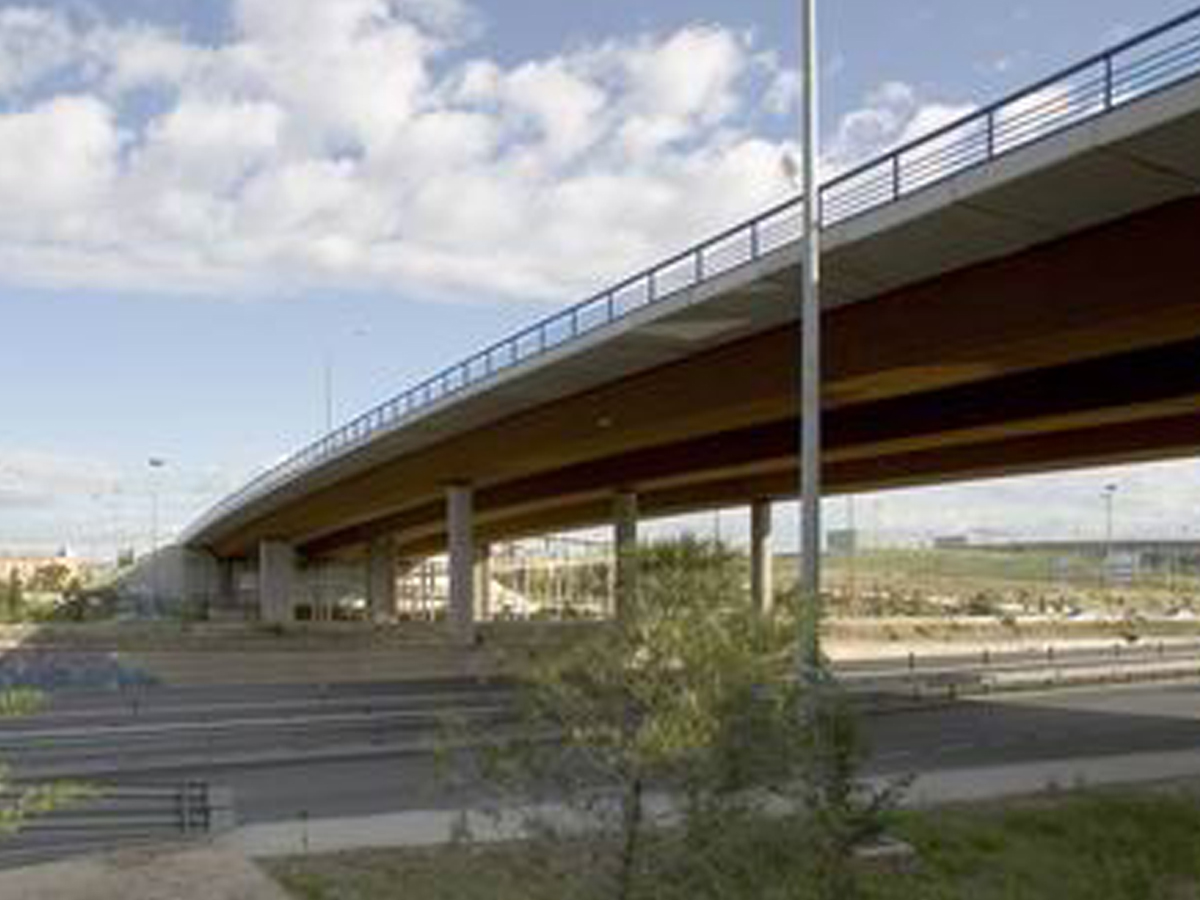
| Composite structures over the A-1 motorway | |
| Structural typology | Road & Highway Bridges |
| Date | Februar, 2004 |
| Umfang | Detail Design and Technical Support |
| Construction | DRAGADOS. |
| Owner | Ayuntamiento de Madrid. |
The two structures belong to the connection of Renault over the A-1 motorway and its left and right service lanes, alongside. On plan, this roundabout does not constitute a unique circular alignment but is composed of several tangent circular ones.
For each one of the two structures (E-3 and E-4), the chosen structural layout includes a continous beam of two spans and constant depth whose pier is based on the median of the A-1. The spans of the two bridges, as well as the typology of the foundations and of the pier on intermediate supports, are limited by the available space between carriage-ways.
The foundation of the piers are built by means of piles which were chosen due to the essential condition of minimizing space requirements, in order to affect the existing traffic the least possible.
The same reasoning, that is, to reduce traffic problems as much as possible throughout construction, was applied to project criteria for both bridges. Therefore, their final design consists of a composite deck whose beam, divided in four parts, was installed with provisional props, allowing its hoisting with cranes instead of centerings. Afterwards, the precast slabs were set in place and the upper concrete slab was cast.
For each one of the two structures (E-3 and E-4), the chosen structural layout includes a continous beam of two spans and constant depth whose pier is based on the median of the A-1. The spans of the two bridges, as well as the typology of the foundations and of the pier on intermediate supports, are limited by the available space between carriage-ways.
The foundation of the piers are built by means of piles which were chosen due to the essential condition of minimizing space requirements, in order to affect the existing traffic the least possible.
The same reasoning, that is, to reduce traffic problems as much as possible throughout construction, was applied to project criteria for both bridges. Therefore, their final design consists of a composite deck whose beam, divided in four parts, was installed with provisional props, allowing its hoisting with cranes instead of centerings. Afterwards, the precast slabs were set in place and the upper concrete slab was cast.





